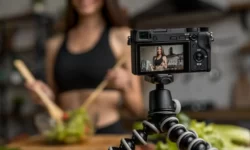7 Types of Social Media Content
Have you ever scrolled through your social media feed and felt a wave of boredom? You’re not alone. It’s the same feeling when a radio station plays the same song on loop. This is where diversity in content jumps in! Social media marketing isn’t just about posting regularly; it’s about what you post. Over the years, the landscape of content on social platforms has changed dramatically. From simple text statuses, we’ve moved to a colorful mix of images, videos, and interactive posts, making social media feeds more vibrant and engaging.
The Importance of Mixing Content Types
Imagine social media as a giant buffet. If all you offer are cookies, sure, people will dig in, but after a while, they’ll crave something different, something savory or spicy. That’s the same with the content we consume online. By providing a mix of content types, you’re catering to various tastes and preferences in your audience.
Every individual has a different way of engaging with content. While some may love reading long-form posts, others might be captivated by a short video or an interactive poll. By diversifying the content you share, you not only hold the interest of your existing audience but also attract new eyes to your brand.
Moreover, this diversity can significantly boost your reach. Different content types have different algorithms for visibility. A well-performing video might get you more views, while an engaging poll can increase your post interactions. Therefore, mixing up your content strategy ensures you’re always at the top of your social media game, enhancing user engagement and maximizing your reach across the platform.
The Seven Key Types of Social Media Content
- User-Generated Content (UGC)
What it is: User-Generated Content refers to content, like photos, reviews, and videos, that are created by people rather than brands. For instance, a happy customer might post a picture of themselves using your product.
Why it matters: UGC is like a friend recommending something rather than a company selling it. It feels more genuine and trustworthy. Brands that highlight UGC can build stronger community ties and witness higher engagement rates. It’s a vote of confidence from the customer to potential customers.
- Infographics and Data Visualizations
What it is: Infographics are visual representations of information, while data visualizations are graphical displays of data. Think of colorful charts, graphs, and visuals that simplify complex data.
Why they’re a hit: Our brains process visual information faster than text. Infographics are easy to digest, share, and remember. Plus, they’re fun! To make yours stand out, ensure it’s clear, relevant, and shares well on multiple platforms.
- Video Content
What it is: Video content can range from short clips, live streams, stories to full-blown productions. Whether it’s a behind-the-scenes look, an explainer video, or a live Q&A session, videos are versatile.
Why it dominates: Videos are immersive. They catch our eye and keep us hooked. With platforms like TikTok and Instagram Stories on the rise, videos are quickly becoming the go-to for brands. They drive higher engagement and can convey a brand’s message effectively and quickly.
- Educational Content and How-Tos
What it is: This includes tutorials, webinars, and posts that impart knowledge. It could be a makeup brand giving a tutorial on the latest look or a tech company offering a webinar on using their product.
Why they’re valuable: People love to learn. By providing valuable knowledge, brands position themselves as industry experts, boosting trust and credibility. When users find value in what you share, they’re more likely to return and recommend.
- Polls, Surveys, and Interactive Content
What it is: Interactive tools like polls or surveys that engage users in a two-way conversation.
Why they work: People love to share their opinions. These tools not only engage but also provide brands with valuable feedback. Plus, they’re a fun way to boost post interactions and understand your audience better.
- Behind-the-Scenes and Company Culture
What it is: Posts that showcase the inner workings of a company. It could be a day in the life of an employee or the process of creating a product.
Why it’s loved: It makes brands more human. It breaks down the corporate wall and allows users to connect on a personal level. Celebrating company culture and values can foster a strong, loyal community around a brand.
- Testimonials and Reviews
What it is: Positive feedback from satisfied customers. Think of it as a modern word-of-mouth.
Why it’s crucial: Social proof. When potential customers see others vouching for a product or service, it builds trust. Highlighting testimonials can drive conversions by alleviating doubts and showcasing real-life benefits.
IV. Adapting Content Types for Different Platforms
Knowing Your Platforms: Each social media platform has its unique culture and audience. For example, while Instagram thrives on visually appealing content like photos and short videos, LinkedIn values professional and informative posts.
Tailoring for the Platform:
- Instagram: Focus on high-quality visuals, stories, and reels. Use user-generated content and behind-the-scenes snippets to boost authenticity.
- Twitter: Infographics, short clips, and interactive polls work well. Keep your messaging concise and engaging.
- Facebook: Videos, both live and pre-recorded, along with interactive content like polls or Q&A sessions, have significant impact.
- LinkedIn: Articles, professional insights, and company culture posts are more relevant here.
- TikTok: Creativity is king. Short, engaging videos with trending music or challenges can go viral.
- Pinterest: Infographics, high-quality images, and tutorials find a loyal audience here.
General Tips: No matter the platform, ensure your content aligns with your brand voice. Also, keep an eye on platform-specific analytics to understand what’s working and what’s not.
FAQs about Types of Social Media Content
Why is it essential to vary content types on social media?
Diversifying content keeps the audience engaged and caters to different preferences, ensuring broader reach and engagement.
Which content type tends to have the highest engagement?
While it can vary by platform and target audience, video content, especially short-form videos like stories or reels, often sees high engagement levels.
How can brands encourage more user-generated content?
Brands can run campaigns or contests prompting users to share their experiences, offer features on the brand’s page as incentives, or simply engage more with user posts.
Are some content types better suited for specific industries or niches?
Yes, for instance, tutorials might be more relevant for beauty and tech brands, while testimonials are crucial for service-based industries.
How frequently should a brand post each content type?
It depends on the brand’s strategy and platform analytics. However, a mix of content types throughout the week can keep the audience engaged without overwhelming them.
Conclusion
Diversity is the spice of life, and the same goes for social media content. By exploring different content types, brands can engage various segments of their audience, ensuring a more widespread and lasting impact. Experimentation is the key. As the digital space continues to evolve, staying flexible and adaptive will be the way forward. Brands are encouraged to learn, iterate, and grow, always aiming to provide value to their audience. Remember, it’s not just about being seen; it’s about being remembered.










